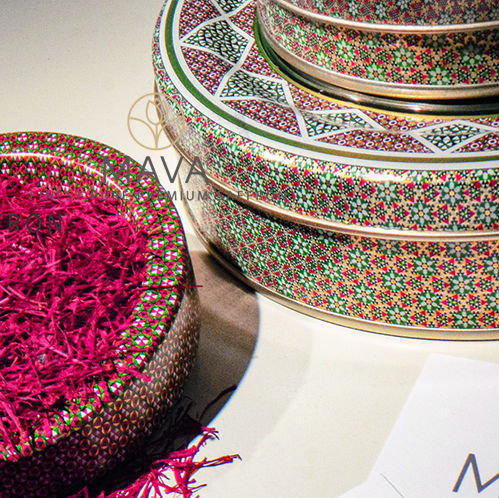Modern Techniques for Growing Saffron: Optimizing Quality and Sustainability
Saffron, a highly prized and valuable spice, has traditionally been cultivated in Mediterranean regions. However, advancements in technology have opened up new possibilities for saffron farming in various climatic zones. By harnessing innovative techniques such as hydroponics, vertical farming, artificial light, automated irrigation, and organic farming practices, saffron production can be optimized for quality, yield, and sustainability. In this article, we will explore these modern techniques in detail, highlighting their benefits and how they contribute to the accessibility of this precious spice.
Creating Ideal Climate and Soil Conditions
Saffron cultivation requires specific climate and soil conditions to thrive. Traditionally, saffron has been grown in Mediterranean regions, but with the help of climate control systems like greenhouses, it is now possible to create the ideal growing conditions for saffron even in non-traditional areas. By regulating temperature, humidity, and light exposure, greenhouses provide a controlled environment that promotes optimal saffron growth
Conducting soil tests and adjusting pH levels, nutrient levels, and organic matter content can also help optimize the soil for saffron cultivation. This ensures that the plants have access to the necessary nutrients and minerals needed for healthy growth. By fine-tuning the climate and soil conditions, farmers can enhance the quality and yield of saffron crops.
Embracing Hydroponics and Vertical Farming
Hydroponics, a method of growing plants without soil by using nutrient-rich water, has the potential to revolutionize saffron cultivation. This technique allows for precise control over moisture, nutrients, and temperature, offering optimal conditions for saffron growth. Hydroponics also eliminates the need for large amounts of land, making it suitable for urban areas or regions with limited arable land.
Vertical farming, on the other hand, involves growing plants in stacked layers, utilizing vertical space to maximize crop yield. By utilizing vertical farming techniques, saffron cultivation can be scaled up without requiring vast expanses of land. This not only increases the efficiency of saffron production but also reduces the environmental impact associated with traditional farming methods.
Supplementing Natural Light with Artificial Light
Saffron plants require adequate sunlight to grow and flower. However, in regions with insufficient natural light or during the winter season, the use of artificial light can effectively supplement the sunlight needed for saffron cultivation. LED technology, in particular, has proven to be highly efficient in providing the necessary spectrum of light wavelengths to stimulate growth and flowering in saffron plants.
By strategically placing LED lights, farmers can ensure that saffron plants receive the right amount and quality of light throughout their growth cycle. This ensures a year-round supply of saffron blooms, reducing dependency on seasonal variations in natural light. The integration of artificial light technology in saffron cultivation not only increases productivity but also allows for greater flexibility in choosing cultivation locations.
Optimizing Irrigation with Automation and Monitoring
Efficient irrigation is crucial for the successful cultivation of saffron. Modern automated irrigation systems, such as drip irrigation or sprinkler systems, offer precise water delivery to the plants, optimizing water usage and minimizing wastage. These systems ensure that saffron plants receive the right amount of water at the right time, promoting healthy growth and preventing water stress.
In addition to automated irrigation, employing monitoring systems with sensors can provide valuable data on crucial environmental factors such as temperature, humidity, and soil moisture. By continuously monitoring these parameters, farmers can make informed decisions regarding irrigation scheduling and plant health management. This data-driven approach to irrigation not only conserves water but also improves the overall efficiency and productivity of saffron cultivation.
Shifting Towards Organic Farming Practices
In line with the growing global preference for organic products, saffron cultivation is witnessing a shift towards organic farming practices. Organic farming involves the use of organic fertilizers, pest control measures, and eco-friendly methods that align with consumer demands for sustainably produced saffron. By avoiding the use of synthetic chemicals, organic farming not only benefits the environment but also enhances the purity and quality of saffron.
Organic saffron captures the essence of its natural golden hue and aroma, appealing to consumers who value authenticity and sustainability. Additionally, by embracing organic farming practices, farmers can tap into niche markets and command premium prices for their pure saffron products. This transition towards organic farming ensures the long-term viability of saffron cultivation while meeting the evolving demands of conscious consumers.
Modern farming techniques have revolutionized the cultivation of saffron, making it possible to grow this precious spice in diverse climates and regions. By harnessing climate control systems, hydroponics, LED technology, automated irrigation, and organic farming practices, saffron production can be optimized for quality, yield, and sustainability. These innovative techniques not only ensure a steady supply of saffron but also enrich our culinary experiences, making the golden spice of the 21st century more accessible to all.
Looking to experience the wonders of premium saffron? Explore our range of pure saffron products available for purchase online. With our commitment to quality and sustainability, you can indulge in the rich flavors and vibrant colors of saffron while supporting responsible farming practices. Visit our online store today and elevate your culinary creations with the finest saffron threads.



